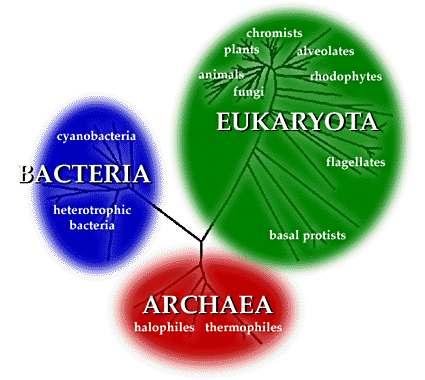|
| About ISB |
| Systems Biology |
Halobacterium |
| Labs Completed |
| About the Interns |
| Past Interns |
| Halo Group |
| Bacteriorhodopsin |
| Funky Fremont |
| Educators |
|
|||||||||||||
|
|
||||||||||||
Believed to be among the earliest form of life on earth, Archaeans share an ancestor with modern day bacteria. After forming nearly 4 billion years ago, the Archaeans was believed to have branched off to give birth to the modern day Eukaryotes, thus explaining the genetic similarities between the two vastly different kingdoms. Like bacteria, archaeans have no internal membranes and contains DNA in a plasmid form. However, the tRNAs and ribosomes of archaeans have a number of features that differs from its bacterial cousins yet somehow resemble those of eukaryotes, thus suggesting a close evolutionary relationship between archaeans and eukaryotes. Although most Archaeans are barely one micron in size, they offer surprising structure diversity. Various species come in a range of different shapes, ranging from a near perfect sphere to a somewhat triangular form. In addition, some species, including the Halobacterium, utilize one or more flagella to move while other species lack the appendage altogether. Most Archaeans, including Halobacteria, thrive in extreme environments where few others organisms survive. Among these extremophiles are Methanogens (Archaeans that produce methane gas as a waste), Psychrophiles (Archaeans that live at unusually cold temperatures), Thermophiles (Archaeans that live at extremely hot temperatures), and Halophiles (Archaeans that live in salty environments—i.e. Halobacteria). |
|||||||||||||
 |
WWW 2006 Intern Site |

